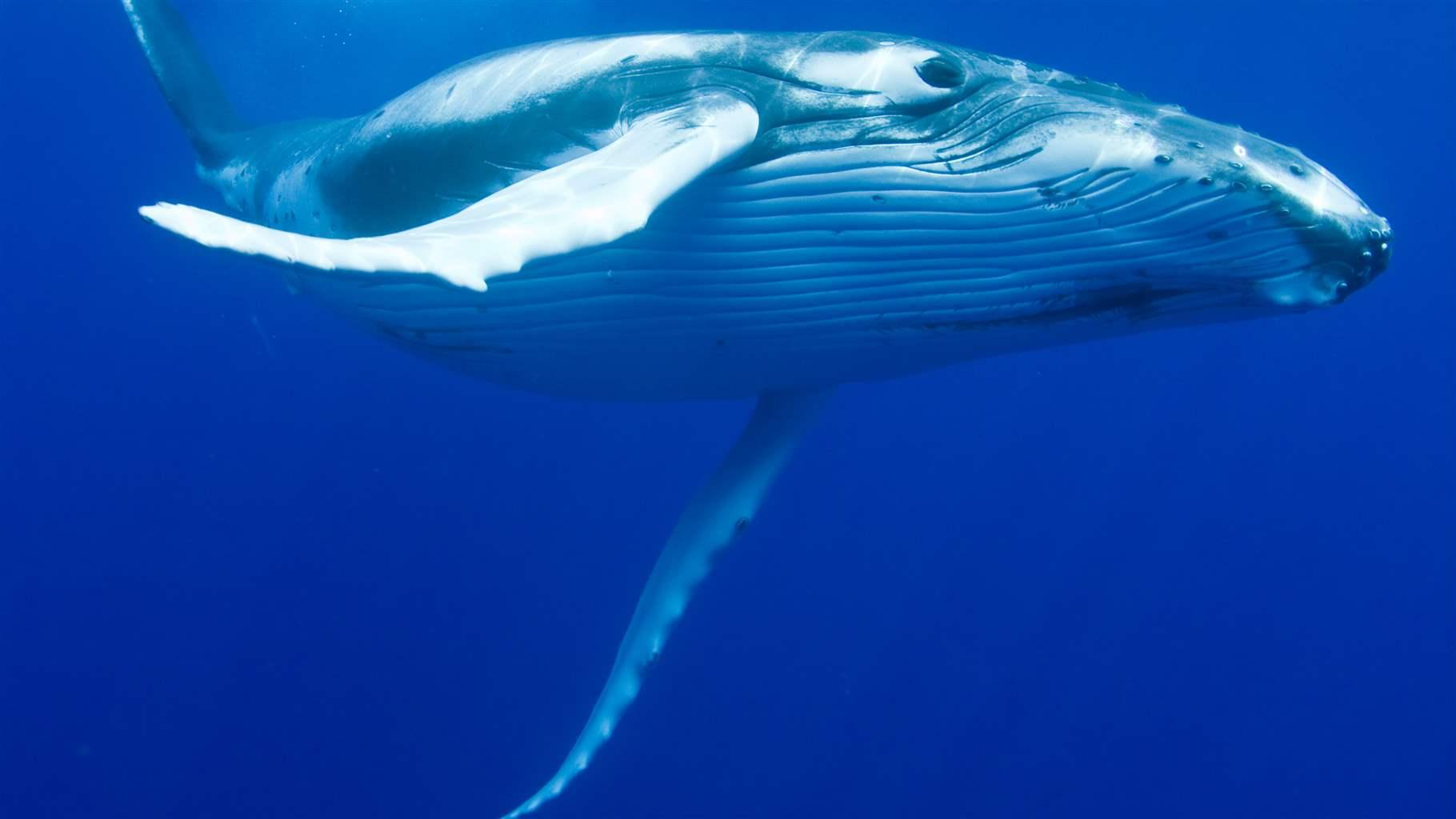Humpback Whales’ Recovery Underscores Need to Safeguard Feeding Grounds
Full protection for South Sandwich Islands would help critical ecosystem

Note: This analysis was updated on Oct. 25, 2019 to clarify that a proposed marine protected area around South Sandwich Islands would include a ban on industrial krill fishing.
The United Kingdom Overseas Territory of South Georgia and the South Sandwich Islands has a history of exploitation. The whaling industry first settled on these islands, which are isolated in the Southern Ocean, approximately 4,000 kilometres north of Antarctica and 2,700 kilometres east of South America, in 1904. Over the following six decades, driven by the demand for whale oil products, workers on South Georgia processed 175,250 cetaceans. By 1965, when whale numbers had dropped too low for the industry to turn a profit, the last of the island’s six rusting whaling stations was abandoned.
Here is video of the South Georgia Whaling Station.
Today, one whale species in the region, the western South Atlantic (WSA) humpback whale, has made a remarkable comeback from those dark days, according to a study, “Assessing the Recovery of an Antarctic Predator from Historical Exploitation,” published this month in the journal Royal Society Open Science. Although whaling drove the WSA population to the brink of extinction—it declined from nearly 27,000 in 1830 to 450 in the mid-1950s—subsequent protection, specifically a 1982 international ban on whaling, has led to a strong recovery. Today, the authors estimate the WSA humpback population at close to 25,000—or 93 percent of its pre-exploitation size.
The continued upward trajectory of this recovery is not guaranteed. Although a ban on commercial whaling remains, scientists believe that climate change and industrial-scale fishing is threatening the whale’s main food source—Antarctic krill. Scientists also say it’s likely that a warming ocean and decreasing sea ice are negatively impacting this tiny crustacean. Some estimates suggest that the species has moved more than 400 kilometres south since the 1970s and that its population has declined by 80 percent. At the same time, increasing numbers of fishing vessels and changes in technology are driving growth in krill catches in the Southern Ocean.
WSA humpbacks spend several months of the year in areas around South Georgia and the South Sandwich Islands feeding on high densities of krill, and it’s unclear how the whales will respond to a continued decline and shift in the krill population.
To help counter those changes and offset the risk to the humpbacks and the broader ecosystem, the U.K. Government should fully protect the waters around the South Sandwich Islands in a marine protected area (MPA). As part of Great British Oceans, a coalition of environmental nongovernmental organisations in the U.K., The Pew Trusts has campaigned for a fully protected MPA—which would include a ban on industrial krill fishing around the South Sandwich Islands. Such a move would support the continued recovery of the humpbacks for decades to come by protecting their primary food source while strengthening the waters’ resilience to the impacts of climate change, a benefit of MPAs shown in scientific studies.
By establishing such an MPA, the U.K. Government would strengthen its status as a world leader in ocean conservation and push it closer to realising its goal of protecting 4 million square kilometres of ocean as part of its Blue Belt commitment.
Check out a more in-depth analysis of the Royal Society Open Science paper here.
Johnny Briggs is an officer with the Pew Bertarelli Ocean Legacy Project’s U.K. work, based in London.







